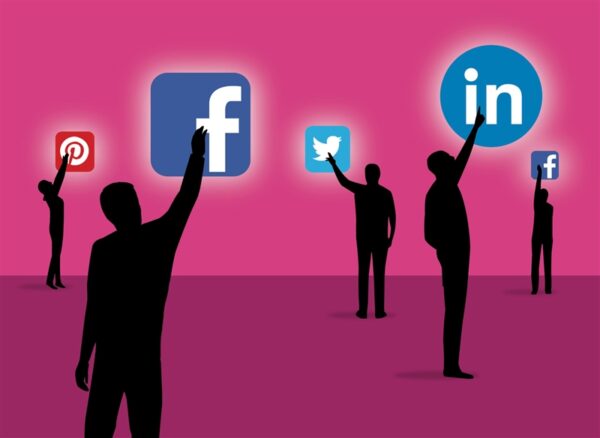How to Use Social Media For Your Enterprise
Internal and external communication go together in social networks
The distinction between internal and external communication is blurring. The Internet and your company are increasingly interrelated: Twitter, online videos on the website, Instagram, YouTube, LinkedIn, … etc. They are a means of communication that can be used in the old way as a means of transmission. At the same time, they offer substantial progress in the way we configure connection: not primarily by informing and persuading, but by applying dialogue and interaction.
The reputation of your organization is increasingly determined by online media. Will you join? Are you up to date? Are you popular? If you want to be, you must buy Instagram followers and likes. Then, you will notice a growth in your marketing, communication, and most importantly, sales!
Join the outside world
To maintain internal communication in a standard way, one has to participate in the outside world. And vice versa. Participation in online networks is indeed a necessity for modern knowledge workers. Preventing it during working hours is not feasible. The role of social networks in your organization will be increasingly important. It also facilitates the search for audience groups that communicate about specific issues related to your organization. The hundreds of professional groups with tens of thousands of managers, professionals and knowledge workers on LinkedIn; The hundreds of blogs on specialized topics, online commerce magazines with an increasing flow of reactions, tweets and discussions … It cannot be stopped anymore. Not participating, strict regulation… will turn against organizations that spread or want to enforce this. That is: Participate in a way that fits the environment or else you will sink!
Without being subject to extensive regulation, the task here is for organizations to cultivate decent internal and external communication. “Learning by doing with one another” is the motto. For example, use social networks such as Yammer, “Connect with your coworkers,” which are specifically aimed at the internal network. In this way, everyone can get used to handling communication through this medium. Meanwhile, the outside world is not quiet. Maybe everything is claimed about your organization. Do your people participate? A better question is: is ‘not to participate’ an option?
But then do you have to give a free hand to employees? Can they participate freely in social networks in discussions about the products and services of their own organization? If employees do not engage in a positive attitude and participation, what is the effect? It is vital that employees understand the brand and core values of their organization, act accordingly and honestly believe in it. This makes demands on internal communication. One thing is sure: the shielding no longer helps. The time of ‘What is inside, stays inside, what does not know what does not matter’ is over. The new transparency requires change.
Codes of conduct and protocols for social networks
There is a tendency to issue guidelines and codes of conduct. It cannot be the case that employees can tweet anything and everything about customers. Or write about the boss. The discussion about this is still in full swing. To give a beautiful image follow these three ideas:
– The code of conduct of social networks.
– Do you already have a Twitter code?
– Social network protocol.
Benefits of social networks
Social networks are increasingly established. Many organizations realize that they have to do something with that. But, what are the real benefits of using social media for organizations? This can be read in ‘What is a social network?’. The most frequently mentioned things are:
Social media offers opportunities for “brand exposure.” By actively interacting with (potential) clients, organizations can draw attention to them and their brands in a distinctive way.
Relationships with customers can be established and maintained through social networks. Social media is ideal for approaching people individually and for coordinating communication with personal interests and preferences. When a constructive dialogue is established, this often leads to customer loyalty. But even when complaints arise, this can be answered through social networks. Many large organizations now have web care teams that monitor online communications about the organization and its products. If complaints are filed, employees are contacted (online or offline) with the person concerned. In this way, charges can be remedied quickly and prevent negative expressions on the Internet. A well-resolved complaint can even lead to a compliment (online). Remember that the client must decide if the organization can communicate with him through social networks. This is a piece of etiquette. Social networks are the private space of consumers.
Because people are guided primarily by their personal interests and preferences in establishing and participating in platforms, there are many niche communities. These communities are very suitable to approach the marketing niches.
The information on social networks is very current, and things are spreading rapidly. People share a lot (news, information, opinions, photos, videos), which facilitates the distribution of commercial messages from organizations. This means that there is a possibility of a “viral” happening. A “viral” is a campaign that is carried out in such a way that people voluntarily send the message (for example, a video) to their contacts. As a result, the campaign spreads like a virus among the target group. Of course, not all are equally active in social networks. Therefore, it may be attractive for organizations to identify the influence factor of customers.
Unlike traditional media, social media offers customers the ability to more efficiently meet needs such as interaction, recognition, being heard and personal development.
You can reach a large number of people through social networks. This means that social networks offer opportunities to use the knowledge and experience of others (crowdsourcing).
The active presence in social networks contributes positively to search engine optimization.
The dark side of social networks
Of course, social networks also have less great sides. It would be wise for organizations to be aware of the following points:
The negligence of employees can have significant consequences. That is always true, of course, but a careless expression can spread quickly through social networks. Besides, stupid comments by an employee about a client or leak of confidential information by an employee can have significant consequences for the entire organization. This is also the reason why organizations tend to adopt a code of conduct for social networks.





